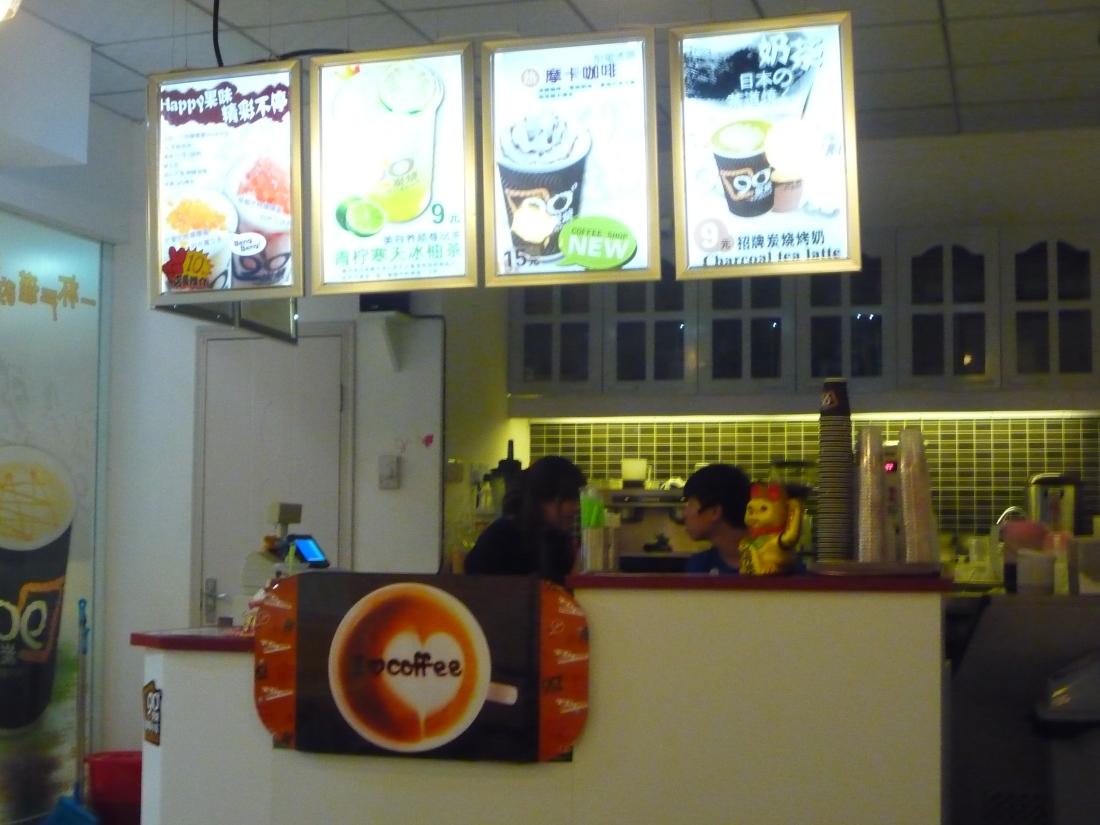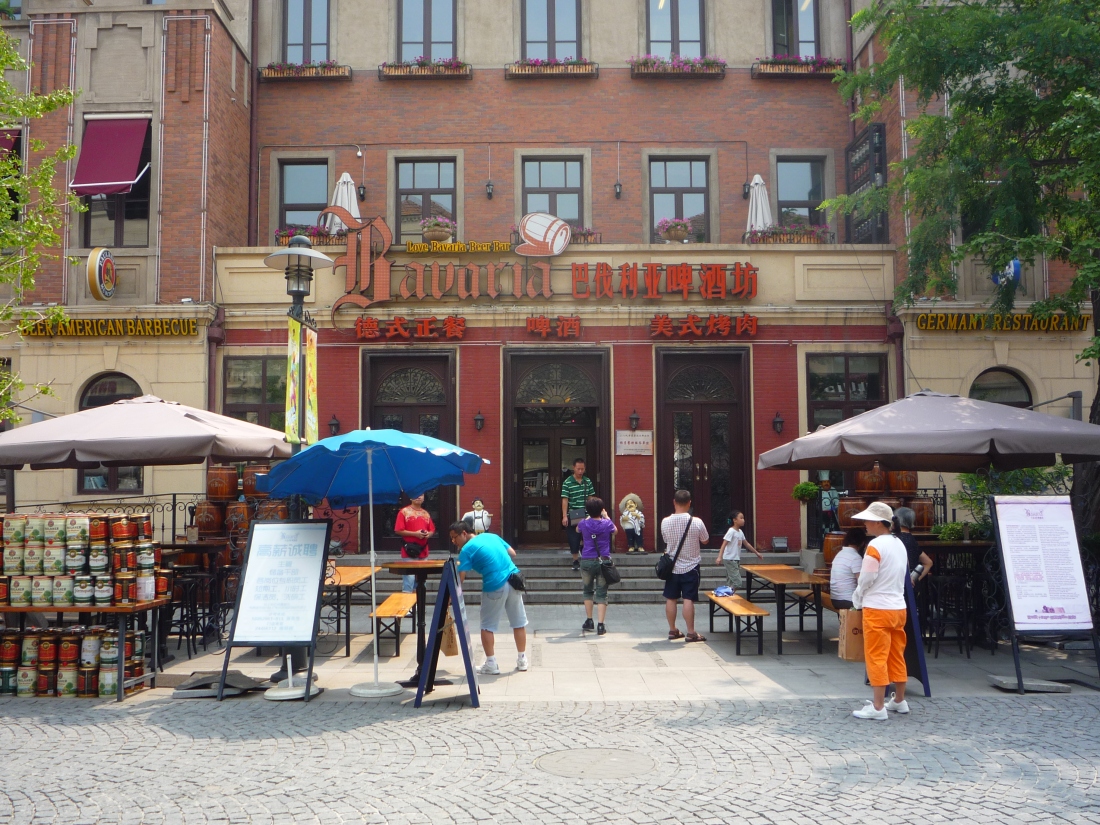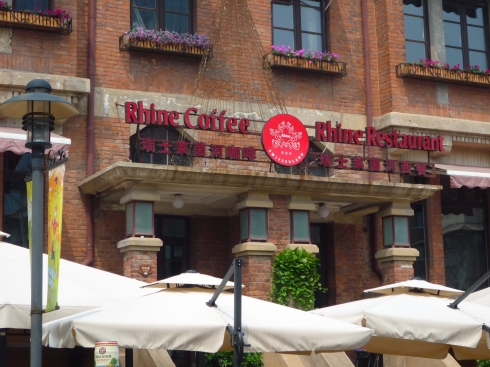Sometimes, you see a place which you find just – bizarre. It brings together various functions which you wouldn’t associate. Like an old Greek monster, with a lion’s head and eagle wings.
There is a place like that in the XiaoBaiLou underground gallery: a café – cinema – shop. Somewhere between the honey shop and the ‘MaLa XiangGuo’ corridor, the nameless place has seats where you can order various creamy drinks and dubious pizza, shelves with imported goods, and a big screen, projecting weird American films about vampires in the desert, ‘Dante’ talking to heretics in hell, or dance classes in a mental hospital.
I found myself there two days in a row – in a strange city, strange places have their own power of attraction, as if the too-much-ness of everything suddenly made sense, somehow.
The devil’s in the details, isn’t it? Well, the shop shelves of Nameless Café do not advertise products in English, but in German. ‘Aus Europa importiert’.





























